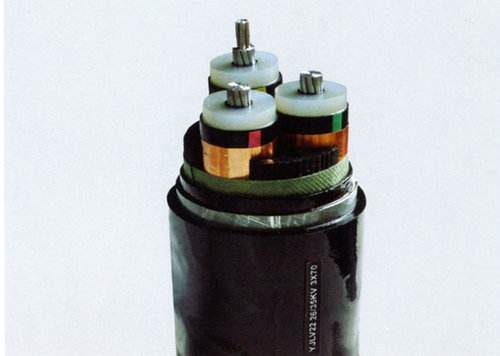
The use of power cables has been around for more than a hundred years. In 1879, the American inventor T.A.
Edison wrapped jute around a copper rod and put it into the iron pipe, and then filled the asphalt mixture to make a cable.
He laid the cable in New York and created underground power transmission.
The following year, the British Karende invented the asphalt impregnated paper insulated power cable.
In 1889, the British S.Z. Ferranti laid a 10 kV oil-impregnated paper insulated cable between London and Dartford.
In 1908, the UK built a 20 kV cable network. Power cables are becoming more widely used.
In 1911, Germany laid a 60 kV high-voltage cable and began the development of high-voltage cables.
In 1913, the German M. Hoichstedt developed a phase shielded cable, which improved the electric field distribution inside the cable and eliminated the tangential stress of the insulating surface, which became a milestone in the development of power cables.
In 1952, Sweden laid a 380 kV ultra-high voltage cable in the northern power plant to realize the application of ultra-high voltage cable.
By the 1980s, 1100 kV and 1200 kV UHV power cables were made.
According to the voltage class, it can be divided into medium and low voltage power cables (35 kV and below), high voltage cables (110 kV or more), ultra high voltage cables (275 to 800 kV) and UHV cables (1000 kV and above).
In addition, it can be divided into AC cable and DC cable according to current.
1 Oil-impregnated paper insulated power cable
With oil-impregnated paper as insulation power cable.
Its application history is the longest. It is safe and reliable, has a long service life and is inexpensive.
The main disadvantage is that the laying is limited by the drop. Since the development of non-drip paper impregnation insulation, the problem of drop limitation has been solved.
And oil-impregnated paper insulated cables have continued to be widely used.
2 Plastic insulated power cable.
The insulation layer is a power cable for extruding plastic.
Commonly used plastics are polyvinyl chloride, polyethylene, and crosslinked polyethylene.
The plastic cable has a simple structure, convenient manufacturing and processing, light weight, convenient laying and installation, and is not limited by the installation drop.
Therefore, it is widely used as a medium and low voltage cable, and has a tendency to replace the viscous oil-impregnated paper cable.
The biggest drawback is the presence of dendrite breakdown, which limits its use at higher voltages.
3 Rubber-insulated power cable
The insulation layer is made of rubber and various compounding agents.
After thorough mixing, it is extruded on the conductive core and heated and vulcanized.
It is soft and flexible, suitable for occasions with frequent movement and small bending radius.
Commonly used as insulating rubber compound is natural rubber-styrene-butadiene rubber mixture, ethylene-propylene rubber, butyl rubber and the like.
1 Low-voltage cable:
It is suitable for fixed power transmission on the transmission and distribution lines with AC 50Hz and rated voltage of 3kv and below.
2 Medium and low voltage cable:
(generally refers to 35KV and below): PVC insulated cable, polyethylene insulated cable, XLPE insulated cable.
3 High-voltage cable:
(generally 110KV and above): polyethylene cable and XLPE insulated cable.
4 Ultra high voltage cable:
(275 ~ 800 kV).
5 UHV cable:
(1000 kV and above).